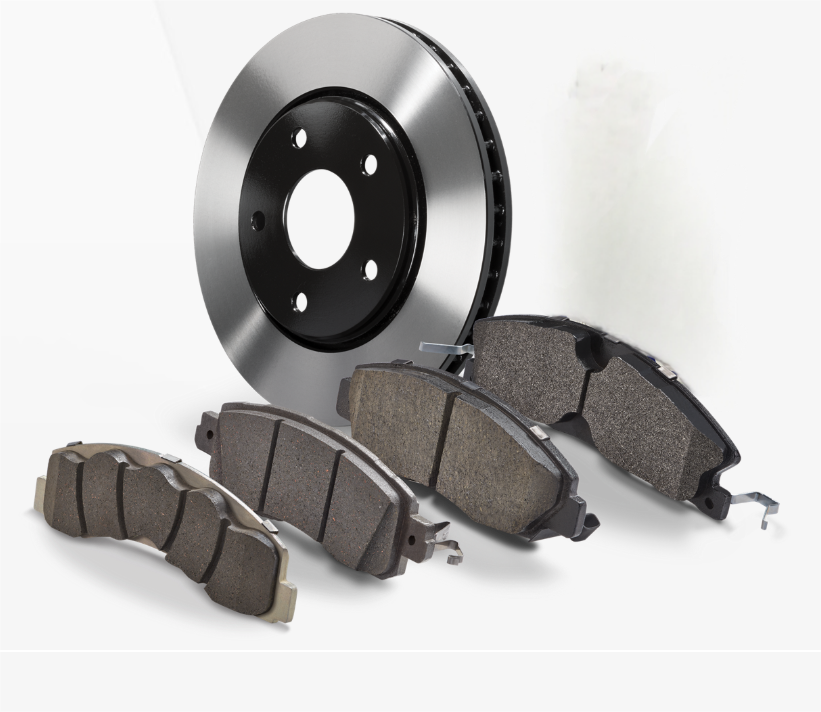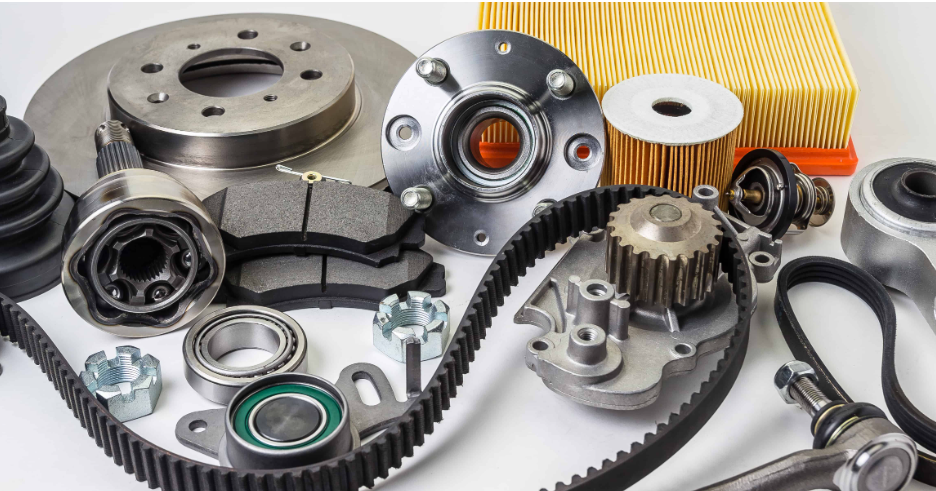Material Composition of Automotive Air Conditioning Hoses
Rubber Compounds for Flexibility and Durability
The type of rubber used makes all the difference when it comes to how flexible and long-lasting automotive AC hoses will be. EPDM and NBR rubbers dominate the market because they just work better in most situations. These materials stand up pretty well against heat extremes, sunlight damage, and ozone breakdown, which explains why mechanics keep specifying them for car parts. What matters most is that good quality rubber bends without breaking down over time, so hoses don't crack or leak prematurely. Field tests show that genuine EPDM/NBR hoses typically outlast cheaper alternatives by at least 30% even under tough conditions like constant vibration or exposure to road salt. For anyone dealing with vehicle maintenance, picking the right rubber compound isn't just about specs on paper it directly affects how often replacement becomes necessary.
Thermoplastic Elastomers in Modern Hose Designs
Thermoplastic elastomers, or TPEs as they're commonly called, are becoming increasingly popular in car hose manufacturing because they work so well in many different situations. What makes these materials stand out is that they can actually be recycled multiple times, plus they last longer than regular rubber options. The secret behind their good performance lies in what they're made of – basically a mix between plastics and something similar to rubber. This combination lets them handle all sorts of tough conditions inside vehicles while still staying flexible enough not to crack or break easily. Research from several studies shows that hoses made with TPE perform better overall, which explains why more automakers are switching to them nowadays. As the industry moves toward greener solutions, TPE represents a smart choice since it meets environmental goals without sacrificing the quality needed for proper vehicle operation.
Nylon Alloy Barriers for Leak Prevention
Nylon alloy barriers play a big role in keeping leaks at bay for automotive air conditioning systems. Made from strong nylon blends, these barriers act like protective shields against refrigerant escape, something regular single layer hoses just can't match. Automotive manufacturers have seen fewer failures and extended lifespans when using these composite barriers, particularly under extreme weather conditions or prolonged exposure to road salts and chemicals. Recent breakthroughs in nylon formulations have pushed the envelope further, making these barriers tougher and more resistant to degradation over time. For mechanics and fleet managers alike, this means fewer emergency repairs during peak summer months and better overall reliability for vehicles operating in tough climates across the country.
Multi-Layer Construction Techniques
Five-Layer vs Seven-Layer Hose Structures
The main thing people notice when looking at five layer versus seven layer hose designs is how they're built and what that means for performance. Five layer hoses are pretty straightforward in construction, which makes them work well enough for everyday jobs where pressure requirements aren't too extreme. Seven layer hoses tell a different story though. These bad boys pack extra layers that make them much tougher against both high pressure situations and extreme temperatures. Industry numbers back this up too pressure ratings jump about 40% higher compared to their five layer counterparts, meaning these hoses last longer before needing replacement. That's why most serious operations involving heavy duty machinery or industrial engines tend to go with seven layer construction whenever possible. The added cost pays off over time through reduced downtime and maintenance headaches.
Textile vs Steel Reinforcement Methods
In hose manufacturing, textile and steel reinforcements play very different roles when it comes to strength versus weight considerations. Textile layers work best when we need something that bends easily without adding too much bulk to the hose body. These are great for jobs where workers need to move around equipment quickly or navigate tight spaces. On the other side of things, steel reinforcement gives hoses real backbone. When dealing with super high pressure situations like industrial hydraulic systems, nothing beats steel for holding everything together under stress. Steel reinforced models can take hits up to about 15 thousand psi before failing, while their textile counterparts generally max out at lower levels depending on the material quality. Most engineers will tell anyone who asks that picking between them really comes down to what matters most for the job at hand – do they need something that moves freely through complex layouts, or something strong enough to survive extreme conditions without bursting?
Vapor Barrier Technology in Thin-Wall Designs
Thin wall hose designs rely heavily on vapor barrier tech to boost performance while keeping gas from leaking out. Manufacturers build extra layers into these lightweight hoses so vapors stay contained inside, which helps maintain system efficiency and cuts down on wasted energy. Thinner walls mean lighter products overall something car makers love because it improves fuel economy. Plus, these hoses bend easier during installation, making them a practical choice for tight spaces under vehicles. Some industry tests actually found around a 20% drop in energy loss when using this barrier tech, which explains why we see it popping up everywhere from factory HVAC systems to passenger car climate control units nowadays.
Pressure and Temperature Resistance
SAE J2064 Pressure Rating Standards
Getting familiar with the SAE J2064 standards matters a lot for anyone dealing with automotive air conditioning hoses because following them means meeting industry requirements that keep things safe and dependable. Basically, these standards lay out what kind of pressure levels the hoses need to handle in all sorts of tough conditions inside vehicles. Take refrigerant lines for example they need to stay intact when pressurized so there aren't any leaks that would cause the whole cooling system to fail, which nobody wants since that leads to expensive repairs down the road. When manufacturers skip over these guidelines, bad stuff happens. Research indicates that hoses not built to spec tend to break down more often, putting drivers at risk while also costing repair shops extra money every time something goes wrong on the road.
High/Low Pressure Hose Applications
Knowing when to use high versus low pressure hoses makes a big difference in how well they perform and how long they last. High pressure hoses tend to show up wherever there's serious work going on, think construction sites or big trucks, because these hoses need to handle intense forces and fluctuating temperatures without breaking down. On the flip side, low pressure hoses usually find their place in lighter duty situations, maybe in regular cars or small appliances around the house. What goes into making them matters too. For high pressure jobs, manufacturers often go with tough stuff like reinforced rubber or even metal reinforcements so everything stays stable under stress. Low pressure options generally stick to something more bendable like plastic since they don't face the same challenges. Industry data shows picking the wrong hose for the job can really hurt things, cutting efficiency somewhere around 15% and causing all sorts of problems with premature wear and breakdowns.
Thermal Stability in Extreme Conditions (-40°F to +250°F)
Keeping things stable when it comes to heat is really important for car parts, particularly between around minus 40 degrees Fahrenheit all the way up to about 250 degrees. Car hoses need to stand up to freezing temps as well as blistering heat without falling apart or losing strength. The materials used here typically involve special rubbers and certain types of plastic that hold up better when temperatures swing wildly. We saw this firsthand in some real world breakdowns where cars literally exploded because the parts couldn't handle the temperature changes. That's why manufacturers spend so much time testing materials they know will last through years of hot summers and cold winters without breaking down.
Maintenance and Leak Prevention Strategies
Identifying Wear Patterns in AC Hoses
Knowing what to look for when AC hoses start showing wear makes all the difference in catching problems before they become disasters. Most folks will notice things like cracks forming, areas where the rubber has worn away, or sections that bulge out unexpectedly. Checking these components regularly isn't just good practice it's practically necessary if we want to catch issues while they're still small. Industry stats suggest something pretty alarming too about 30% more failures happen when people skip routine checks, and that means expensive repairs down the road plus systems running inefficiently until fixed.
Proper Inspection Techniques for Micro-Leaks
Checking for those tiny leaks in AC hoses matters a lot when keeping the whole system running properly. Most technicians rely on pressure tests along with careful looks at connections and joints to spot these small problems before they get worse. Catching issues early means the hoses last longer and perform better, which saves money on repairs down the road. According to some research out there, pressure testing finds around 85% of these micro-leaks, making it pretty much essential for anyone doing regular maintenance checks. That's why shops that want to stay ahead of breakdowns make sure their techs know how to do proper leak detection right from the start.
Common Failure Points in Refrigerant Circulation
Knowing where things tend to go wrong in refrigerant systems makes it easier to spot and fix AC hose problems before they become major headaches. Most trouble spots are around those connections between the compressor, condenser unit, and evaporator coils. These joints just naturally get worn down over time and start leaking. When looking at hose options, reinforced construction matters a lot. Multilayer designs stand up better to the pressures involved. Mechanics see this all the time on job sites - bad hose design leads to repeat repairs. The bottom line is picking quality materials pays off in the long run. Systems last longer and run smoother when built with proper components from the start.
Industry Trends in Hose Technology
Lightweight Materials Improving Fuel Efficiency
The use of lightweight materials in hose design makes a big difference when it comes to improving how much fuel vehicles consume. When manufacturers switch to stuff like advanced polymers and composite materials, they cut down on vehicle weight quite a bit, and this has a direct impact on better fuel economy. Beyond just saving weight, these modern materials actually stand up better to wear and tear while handling extreme temperatures too, which means cars perform better over time. According to some market research numbers from Global Market Statistics, we've seen substantial market expansion thanks to progress in these lighter materials. This growth pattern clearly shows why so many automotive companies are focusing on making their vehicles more fuel efficient through smarter material choices.
Sustainable Manufacturing Practices
The automotive hose business is seeing a real shift toward greener manufacturing methods lately. Companies across the sector are getting serious about going green, incorporating things like material recycling programs and finding ways to cut down on their carbon emissions during production runs. The main goal here isn't just ticking boxes for environmental regulations but actually making sure automotive parts can keep being made without harming the planet too much. Take plastic hoses for example many manufacturers now produce versions that can be recycled after use, which solves two problems at once good performance characteristics while still being kinder to the environment. Industry insiders note that beyond helping protect our ecosystems, these changes are slowly building something bigger a genuine culture change within the auto component manufacturing world where sustainability isn't just a buzzword anymore.
Compatibility With R1234yf Refrigerants
We're seeing a big move across the industry toward R1234yf refrigerants, which means companies need to find hose materials that work well with this stuff. Why? Because R1234yf has those green credentials everyone wants these days. But here's the catch for manufacturers trying to keep up: creating hoses that can handle this refrigerant isn't exactly straightforward. They spend months running all sorts of tests in labs, looking at how different materials react when exposed to R1234yf over time. The challenge lies in finding that sweet spot where the hose resists degradation from the refrigerant while still holding up under normal operating conditions. Most engineers will tell you compatibility ratings matter a lot right now. We're talking about constant improvements as companies race to develop hoses that perform reliably even with these newer refrigerants on the market.







